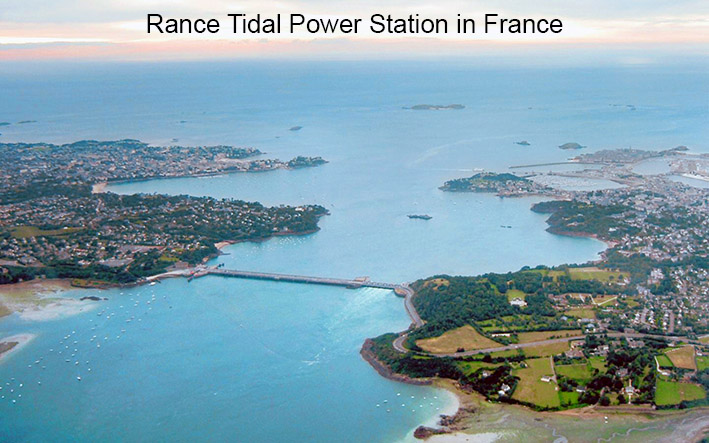The Kamchatka Tidal Power Station: Russia's Hydrogen Future

In the distant Kamchatka Peninsula, in the heart of Russia's wild and untamed nature, an impressive engineering marvel becomes a reality - the Penzhinskaya tidal power station (TPS), with a total capacity exceeding 100 gigawatts, promises to change not only Russia's energy landscape, but the entire world's.
Project Scale
The Penzhinskaya TPS project itself is staggering in scale. It will be the largest tidal power station in the world, capable of generating electricity from renewable sources. The Penzhinskaya Bay is not particularly well-known to those unfamiliar with the topic. However, it is a unique place. Located in the Sea of Okhotsk at the base of the Kamchatka Peninsula, where the peninsula meets the mainland, it stretches 300 kilometers in length, with an average width of 65 kilometers, and a maximum depth of 62 meters. During high tide, the sea level rises by 10-14 meters. Through its gates, up to 500 cubic kilometers of water flows every day. For comparison, the Volga River transports this much water in two years, the Don River in 25 years. The world's most voluminous river, the Amazon, would cope with such a load in 25 days. The Penzhinskaya Bay needs only 24 hours for this.

How Modern TPS Works
The power station works as follows: a dam is installed in the sea, and hydro units are mounted in it, including a turbine and a generator. Today in Russia, hydro units are produced that compete with foreign analogues, and in some cases surpass them in terms of efficiency and reliability. During high tide, the powerful water flow rotates the hydro turbine, generating a large amount of current. The same thing happens during low tide. That is, the turbine never stands idle. The Penzhin project consists of two stages: the construction of the Northern and Southern dam (with a capacity of 21 gigawatts and 87 gigawatts, respectively).
To better understand the efficiency of such a structure, it is necessary to compare the future TPS with other power stations. The infamous Chernobyl Nuclear Power Plant generated 1 gigawatt per hour, the Sayano-Shushenskaya Hydroelectric Power Station generates 4.6 gigawatts. The recognized champion among world power stations - the Chinese Three Gorges Dam on the Yangtze River - produces up to 22.5 gigawatts. Potentially, the Penzhin TPS is capable of generating more than 100 gigawatts. This is equivalent to 25 modern nuclear power plants, or 40% of the total capacity of the Russian power system.
Obviously, to deliver such a large amount of electrical energy to consumers, it will be necessary to build a large number of extensive power lines. Considering the distances spanning thousands of kilometers across the vast territory of Russia, the cost of constructing these lines could outweigh all the benefits of electricity production in such remote areas. Therefore, an elegant solution to this problem has been found - a significant portion of the electricity generated by the Penzhinskaya TPS is planned to be used right there on-site for hydrogen production.
Rapid Development of Hydrogen Energy
Penzhinskaya TPS promises to become not only a source of electricity, but also a catalyst for the rapid development of hydrogen energy in Russia. Hydrogen is a universal, environmentally friendly fuel that can become an alternative to oil and gas in the future.
Thanks to the huge amount of electricity produced by the Penzhinskaya TPS, Russia has a unique opportunity to use it for hydrogen production using the electrolysis process. This will significantly reduce greenhouse gas emissions, reduce dependence on fossil fuels, and make Russian energy more sustainable and competitive on a global scale.
Future of Hydrogen Energy
Hydrogen energy represents a promising direction in the development of the energy industry, attracting attention from around the world. However, for its successful implementation, powerful sources of renewable energy are needed, capable of providing a sufficient amount of hydrogen for various sectors of the economy.
The Penzhinskaya TPS is an important step in this direction, providing Russia with a unique opportunity to become a leader in hydrogen production. In recent decades, hydrogen energy has been the subject of active attention and investment from leading countries in the world, and Russia is not going to stay aside from this important trend.
But in addition to hydrogen production, for which a huge amount of electricity is needed, tidal power stations can also power traditional industrial facilities, such as oil refineries, aviation, steelmaking, and other plants. In the future, when the project is completed, and at least one dam in each direction of the unique power station is built, Russians will forget what expensive electricity is and will be able to use as much light as they need.
Conclusion
The Penzhinskaya tidal power station in Kamchatka promises to become a powerful engine for the development of hydrogen energy in Russia. Its launch opens up enormous opportunities for the country to create a sustainable and environmentally friendly energy system capable of competing in the global market and attracting investments in innovative technologies. In the next 10 years, the Penzhinskaya TPS could become a symbol of a new era in Russia's energy industry - the era of hydrogen energy.
If you like this article please help keep us going, no matter the amount, your donation makes a difference!



Leave your comment